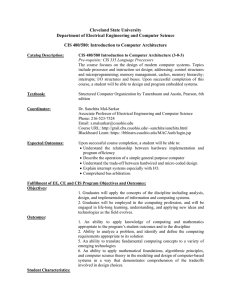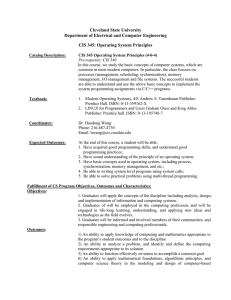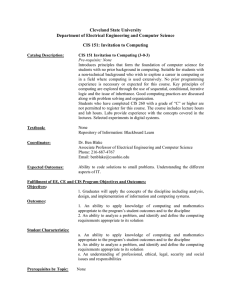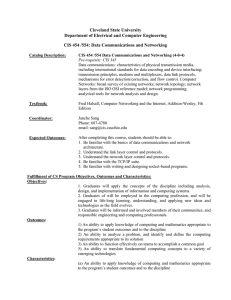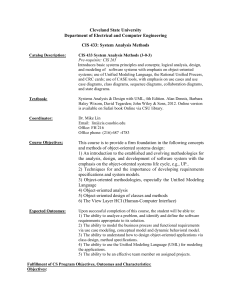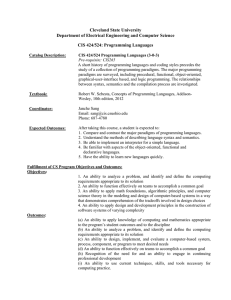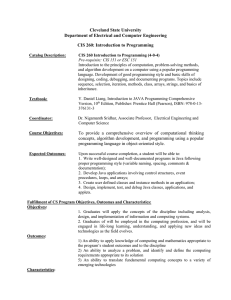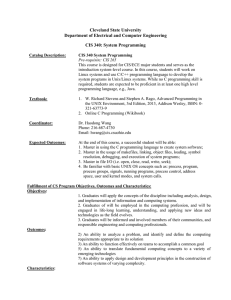Cleveland State University Department of Electrical Engineering and Computer Science
advertisement
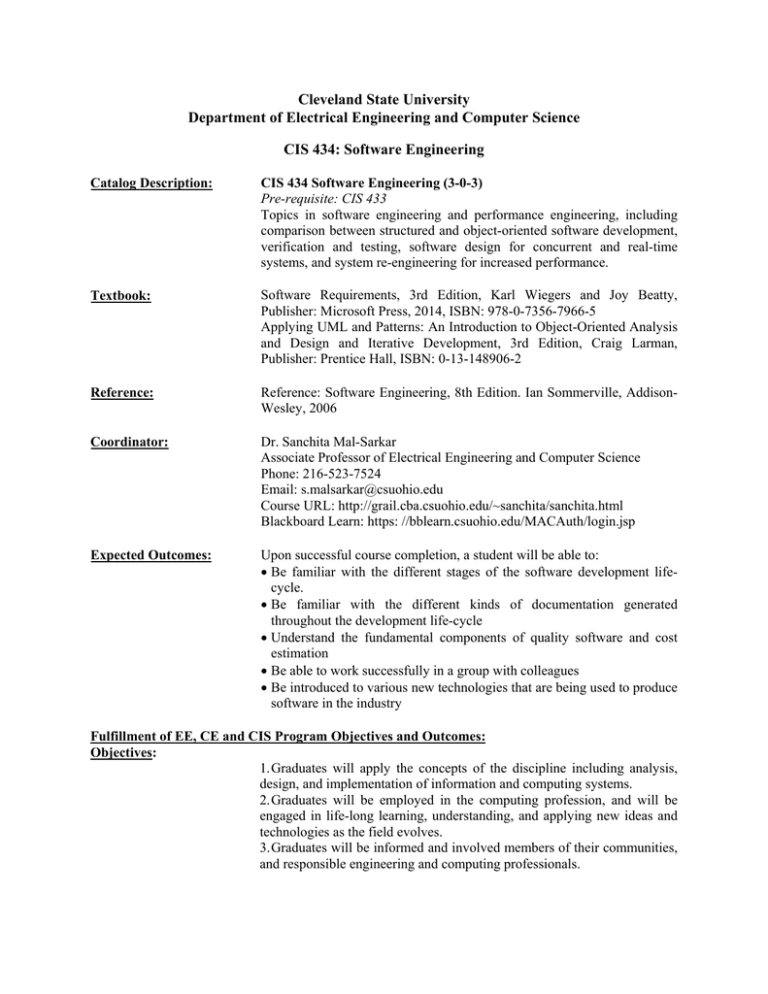
Cleveland State University Department of Electrical Engineering and Computer Science CIS 434: Software Engineering Catalog Description: CIS 434 Software Engineering (3-0-3) Pre-requisite: CIS 433 Topics in software engineering and performance engineering, including comparison between structured and object-oriented software development, verification and testing, software design for concurrent and real-time systems, and system re-engineering for increased performance. Textbook: Software Requirements, 3rd Edition, Karl Wiegers and Joy Beatty, Publisher: Microsoft Press, 2014, ISBN: 978-0-7356-7966-5 Applying UML and Patterns: An Introduction to Object-Oriented Analysis and Design and Iterative Development, 3rd Edition, Craig Larman, Publisher: Prentice Hall, ISBN: 0-13-148906-2 Reference: Reference: Software Engineering, 8th Edition. Ian Sommerville, AddisonWesley, 2006 Coordinator: Dr. Sanchita Mal-Sarkar Associate Professor of Electrical Engineering and Computer Science Phone: 216-523-7524 Email: s.malsarkar@csuohio.edu Course URL: http://grail.cba.csuohio.edu/~sanchita/sanchita.html Blackboard Learn: https: //bblearn.csuohio.edu/MACAuth/login.jsp Expected Outcomes: Upon successful course completion, a student will be able to: Be familiar with the different stages of the software development lifecycle. Be familiar with the different kinds of documentation generated throughout the development life-cycle Understand the fundamental components of quality software and cost estimation Be able to work successfully in a group with colleagues Be introduced to various new technologies that are being used to produce software in the industry Fulfillment of EE, CE and CIS Program Objectives and Outcomes: Objectives: 1. Graduates will apply the concepts of the discipline including analysis, design, and implementation of information and computing systems. 2. Graduates will be employed in the computing profession, and will be engaged in life-long learning, understanding, and applying new ideas and technologies as the field evolves. 3. Graduates will be informed and involved members of their communities, and responsible engineering and computing professionals. Outcomes: 1. An ability to apply knowledge of computing and mathematics appropriate to the program’s student outcomes and to the discipline 2. An ability to analyze a problem, and identify and define the computing requirements appropriate to its solution 3. An ability to function effectively on teams to accomplish a common goal 4. An ability to communicate effectively with a range of audiences 5. An ability to translate fundamental computing concepts to a variety of emerging technologies Student Characteristics: (a) An ability to apply knowledge of computing and mathematics appropriate to the program’s student outcomes and to the discipline (b) An ability to analyze a problem, and identify and define the computing requirements appropriate to its solution (c) An ability to design, implement, and evaluate a computer-based system, process, component, or program to meet desired needs (d) An ability to function effectively on teams to accomplish a common goal (f) An ability to communicate effectively with a range of audiences Prerequisites by Topic: Basic systems principles and concepts; logical analysis, design, and modeling of software systems. Topics: 1. Introduction to Software Engineering and course policies, Software Product 2. Software Process, Prescriptive Process 3. Programming and problem solving 4. Software Cost Estimation Requirements 5. Analysis Modeling 6. Classes and Objects 7. Introduction to Software Design, Software Architectural Design 8. Object-Oriented Design, Contract-based Design 9. Design Patterns 10. Aspect-Oriented Programming Verification and Validation 11. Black-Box Testing, White-Box Testing 12. Object-Oriented Testing, Software Model Checking 13. Model Checking with SPIN
